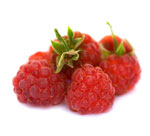Detox the Family Medicine Cabinet and Make Every Day Earth Day
Posted by: admin on: August 9, 2011
“In India, where even prescription medicines viz anti anginals, OHA, anti hypertensive’s are lying around unprotected such a caution is badly needed.”
Studies have shown that toxins found in commonly used products in your medicine cabinet and shower may expose you to harmful chemicals-including everything from over-the-counter pain relief pills to toothpaste, shampoo, and moisturizers.
But now thanks to these healthy bathroom detox “makeover” tips from Topical BioMedics, Inc., you can go ‘Green’ on Earth Day to make every day safer and healthier for you and your family.
Read the rest of this entry »
Why total body scans are a scam
Posted by: admin on: August 9, 2011
- Folks across the country are paying hard cash for total body scans, abdominal aortic aneurysm testing, CAT coronary artery scans and carotid artery evaluations to prevent disease or find important lesions early. Ordinary patients don’t understand about pre-test probability and positive and negative predictive values. A critical principle of proper diagnostic testing can be summarized in a single sentence.
- If an individual is unlikely to have the medical condition under consideration, then a diagnostic test that yields a positive result is likely to be a false reading.
- Here is an illustration demonstrating why patients need to understand this issue. Read the rest of this entry »
JNC 8: A ‘C’ Change in Guidelines
Posted by: admin on: August 9, 2011
George Bakris, MD: I’m Dr. George Bakris, Professor of Medicine and Director of the Hypertensive Diseases Unit at the University of Chicago, Chicago. We’re going to be talking about guidelines, and I’d like to introduce a good friend and colleague Dr. Rajiv Agarwal, Professor of Medicine in the Department of Medicine at Indiana University, Indianapolis, Indiana, and a well-known authority in the field of hypertension and kidney disease.
The JNC 8 was due to come out over a year and a half ago and we’re still pending: It looks like they’re going to be out next year. On the basis of all of the guidelines, Rajiv, that have come out from the American College of Cardiology (ACC), American Heart Association (AHA), and the position papers from the American Society of Hypertension what do you think the JNC 8 is going to add by the time they come out? It’s a new format as you know. Why don’t you tell us about it?
How obesity is like alcoholism
Posted by: admin on: August 8, 2011
- What is Alcoholism?
- Alcoholism is a primary chronic disease with genetic, psycho-social and environmental factors influencing its development and manifestations. It is characterized by continuous or periodic impaired control over drinking, preoccupation with the drug alcohol despite adverse consequences and distortions of thinking, mostly denial. Let us look at this definition of alcoholism and see what aspects of it (if any) apply to obesity.

- In some cases obesity may be more genetic, in others more psycho-social and sometimes purely environmental, but certainly, obesity would fit the bill as far as this statement goes. And yes, obesity is often progressive and fatal. Most people, let alone those struggling with obesity, experience progressive weight gain over time. Sometimes periods of rapid weight gain are followed by periods of weight stability or even weight loss, but in the long term, no one with obesity would carry their excess weight had they not progressively gained it over time Read the rest of this entry »
Abdominal aortic aneuryms (AAA) in women by Thomas Maldonado, MD
Posted by: admin on: August 8, 2011
Abdominal aortic aneuryms (AAA) are responsible for 15,000 fatalities annually in the USA and are the 10th leading cause of death. Approximately 5-7% of adults over 60 years old are affected by AAA. Although it appears to be twice as common in men than in women, the risk of risk of rupture in women is actually four-fold that in men.
When an AAA ruptures, it carries a 75-90% mortality rate. Age, smoking, and heart disease are each associated with increased risk of AAA and when all three risk factors are present together, the incidence of AAA is as high as 7%. Smoking has been shown to be the single most important risk factor for women who develop AAA. Other risk factors include hypertension, high cholesterol, obstructive pulmonary disease, and family history of AAA.
Search
- drchasrani: Difficult to get such a data, authenticated at that. Try Times of India online library
- rakesh pore: hi, where can i get genuine information about "10 most common drugs sold in india?" i want it for a local project
- nilesh dutta: sir, Plz give detail about MBA Sports Management Thanks and Regards

